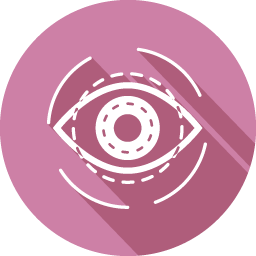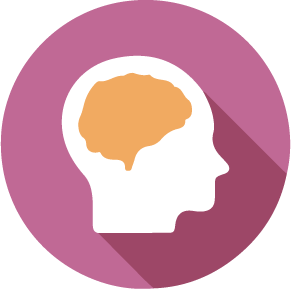Nanomarketing: the future of neuromarketing
Relevant topics Research, Archive
Have you ever been part of a neuromarketing experiment where the researchers actually scanned your brain? How many people do you know that have been? Probably not too many. Still, there are heaps of neuromarketing articles too be found. All of us at New Neuromarketing are, of course, very happy with this, as it gives us much to write about.
But if we look closer at a multitude of this research, we notice that often behavioral or attitudinal data is used. Experiments investigate what people do, what they say they will do or how they feel. Especially the latter is slightly ironic, as an important basis of neuromarketing research as it was intended, is that people are horrible at predicting what they will do or at evaluating how they feel.
That is why researchers want to learn as much as they can about our brains, and what happens when we buy products, watch advertisements and interact with brands in other ways.
This traditional neuromarketing research is often conducted with complex and sophisticated tools, the most advanced technique being functional Magnetic Resonance Imaging (fMRI). The use of neuroscience has advanced conventional marketing research, increasingly providing indications that emotions and subconscious responses can strongly impact perceptions and decision-making of consumers.
However, there are also a few limitations when working with these techniques. Mileti, Guido & Prete (2016) explain these limitations and argue how new nanotechnologies could further improve neuromarketing, offering the term nanomarketing for this potential new field of research.
Limitations of traditional neuromarketing
The main issues encountered with current neuromarketing technology are as follows:
- The very sophisticated technologies used right now are expensive. Experiments are thus costly to conduct and short in time, which leads to small samples. This makes it very hard to gain reliable insights from these studies.
- Experiments need to be conducted in laboratories. It’s hard to mimic real-life situations, as external disturbance is not naturally present in a laboratory environment and sometimes subjects are restricted in body movement. Again, this has consequences for the validity of experimental results when you want to apply these in the real world.
- Only a single neuroimaging technology, such as fMRI, can be used at a time. This results in an incomplete understanding of the relationships between different physiological processes and behavior.
- The same holds for nonneuroimaging devices such as EEG, the results of which are considered individually. Furthermore, those devices are limited in brain exploration possibilities.
- Neuro-ethics. The field of neuromarketing is one that receives much critique. Some consumers are afraid a “buy button” exists in their brain and companies will exploit it if it is found. Furthermore, protection of vulnerable population groups is currently scarce. Awareness and comprehension of study objectives, transparency of marketing strategies being created from experiments and legislation to accompany the developments in the field are all areas in need of attention.
Newneuromarketing is looking for new authors! Are you up for the job?
Send us an e-mail at tim@newneuromarketing.com to become an author and start spreading knowledge.
Introducing nanomarketing technology
There are many new nanotechnologies: increasingly complex tools in small devices. This article predicts that the development of this technology, and the possibility to integrate neuromarketing tools in small, non-intrusive and wireless devices, will lead to a new field: nanomarketing.
Examples of neuromarketing technology in increasingly smaller devices are EEG headsets and “Galvanic Skin Response” devices. You wear the latter category around your wrist and they measure emotional arousal and stress. Furthermore, military and athletic fields are working with wearables and other portable devices that measure all kinds of physiological parameters. Other companies and universities are working on remote monitoring and assisting patients in order to reduce hospitalization. The authors propose future developments will bring the following opportunities:
- Employing nanomarketing technology to measure emotional states in real time. Experimentation will become significantly less expensive, while at the same time much more data can be collected. The reliability and validity of findings will greatly increase.
- Nanomarketing devices can be unobtrusive and portable. They can be used in real-life and are much more comfortable for subjects.
- Nanomarketing devices can be multifunctional. Different signals can be measured at the same time, which will increase reliability and validity of findings.
- Laboratory experiments can be combined with daily life miniaturized devices’ tests. Multiple neurological, biological and physiological signals can be measured together. A deeper understanding of emotional states and their relation to consumer behavior can be gained.
- With all the opportunities nanomarketing technologies bring, another opportunity arises: to create a nanomarketing ethical framework. This can help to defend consumer privacy and autonomy and better protect vulnerable population groups. An increased understanding of people’s brains and emotions can also, for instance, help to comprehend compulsive behaviors and buying habits and even protect consumers from destructive behavior.
Towards the future of neuromarketing with nanomarketing
Next to the possibilities mentioned by the authors, the future could bring even more possibilities in this area. I recently watched a TED talk that explained “transdermal optical imaging” technology that can detect lying from video footage with an accuracy of 85%, which is much better than humans perform (we score around 50%, in other words no better than probability theory would expect).
Even heart rate, stress and mood can be determined from video images. Talk about unobtrusive technology! Although this example is still in a very early stage of development, the possibilities for the future are very promising.
In general, nanomarketing studies could revolutionize understanding of consumer behavior. Fundamental marketing principles such as attitudes, intention to purchase, advertising response and satisfaction could be investigated further.
Miniaturization of technologies can eliminate or at least improve current limitations of neuromarketing research. For marketing managers, nanomarketing can strongly improve the ability to test advertising effectiveness, evaluate product appeal and select an optimized media mix. Use of nanotechnologies can also benefit consumers as companies are better able to provide fitting products and services that enhance their lifestyles, and create more relevant advertising programs.
Further Reading
-
How Neuroimaging Can Save the Entertainment Industry Millions of Dollars
Wow. Just wow.
Let me share two experiments that have changed my view on the power of brain imaging forever.
Can your brain predict who will be the next Lady Gaga?


